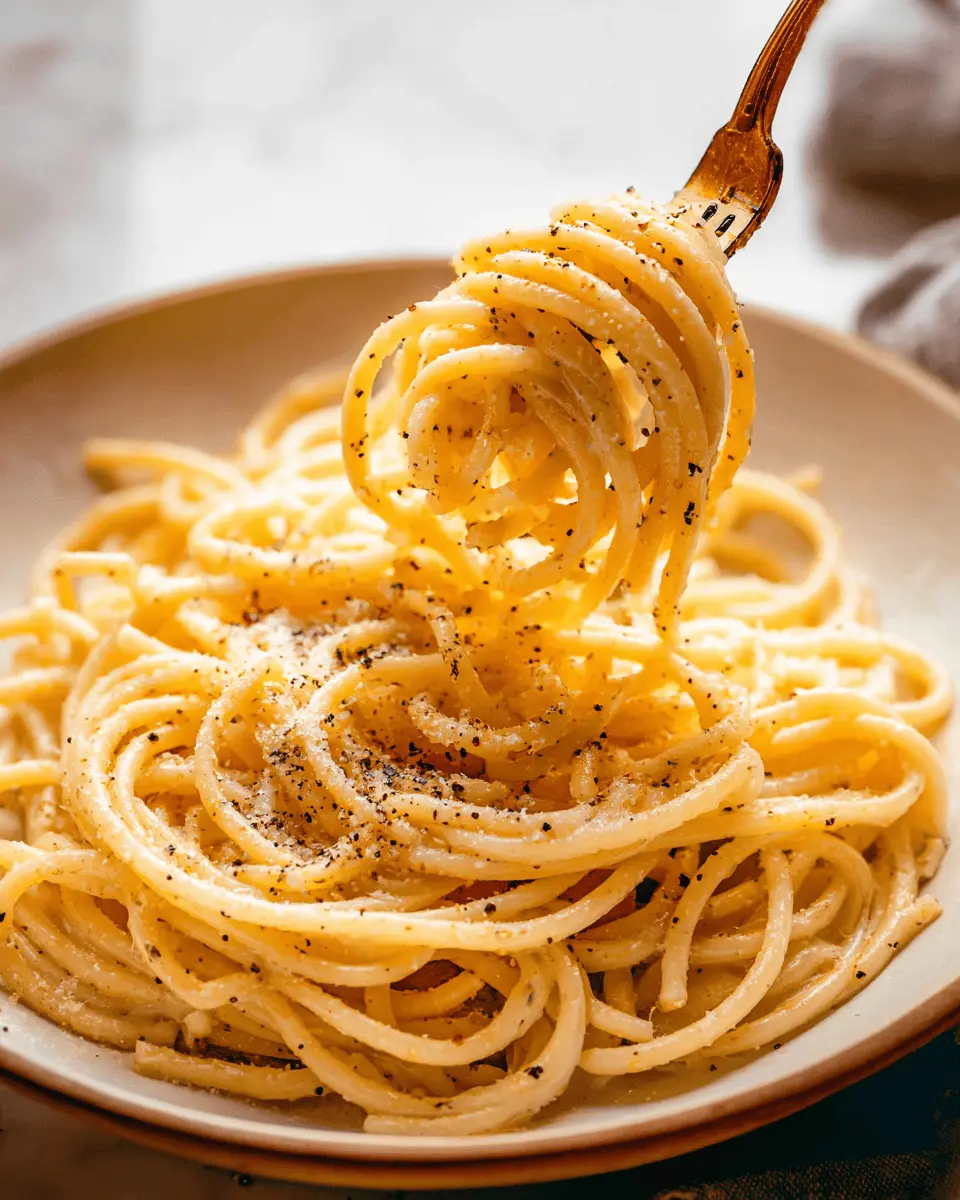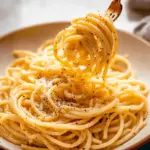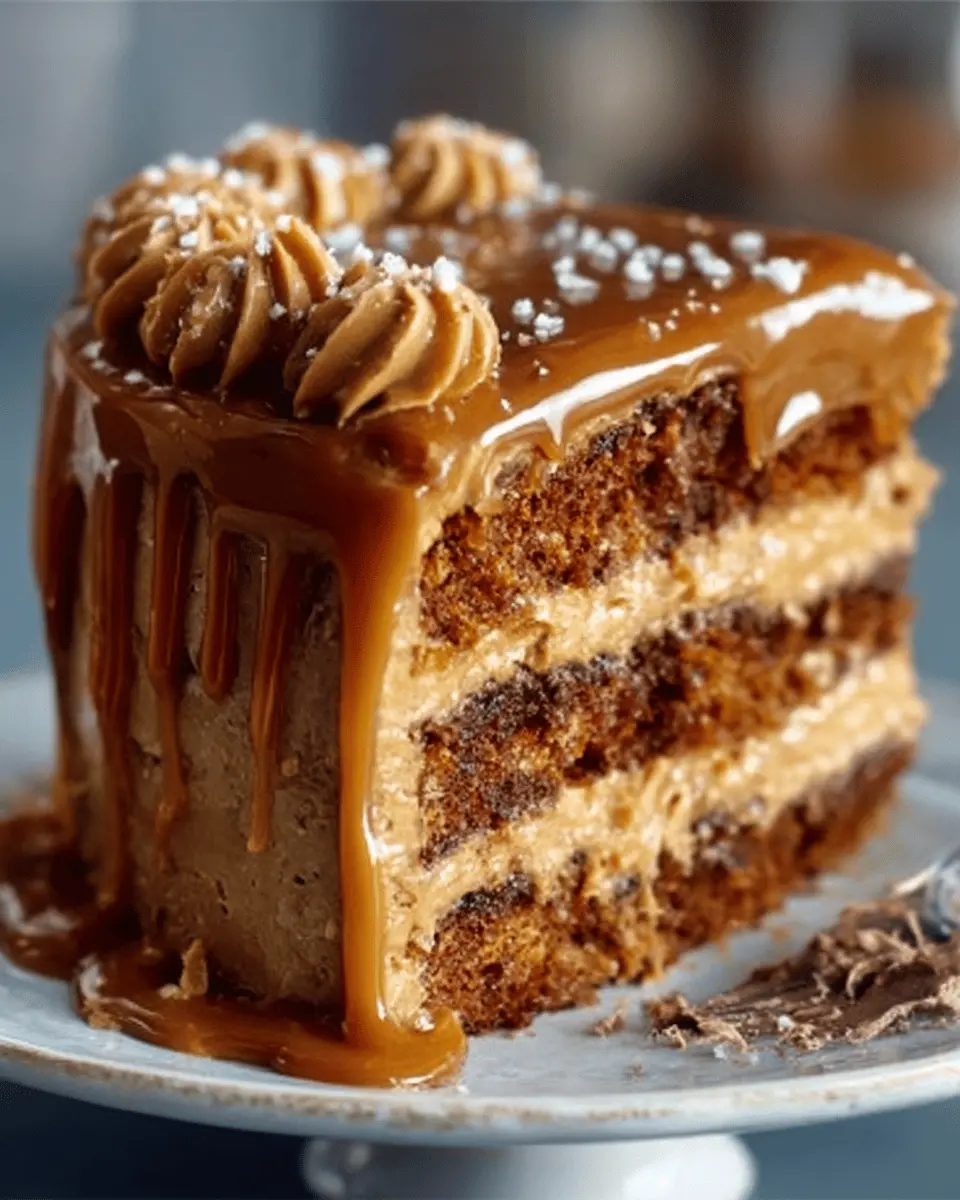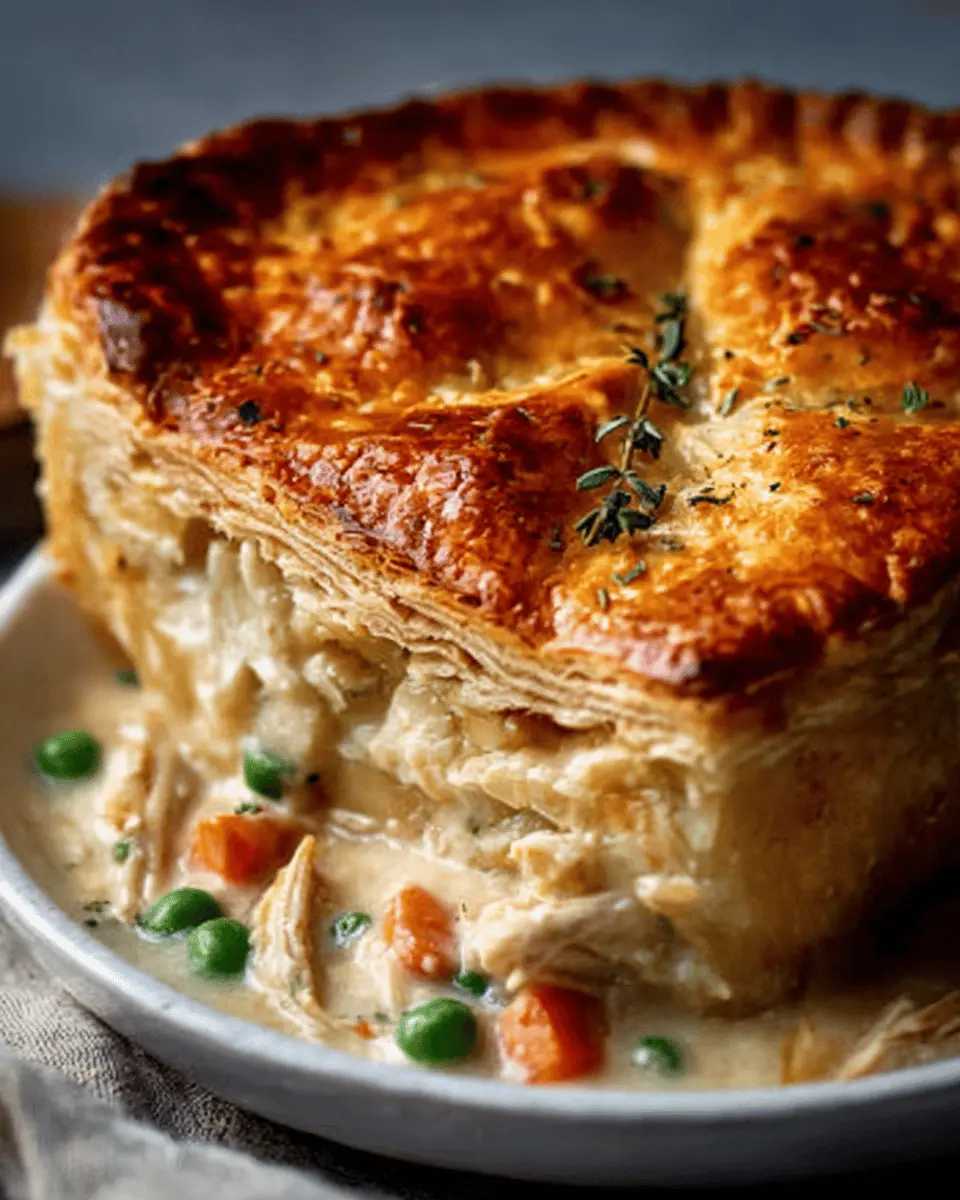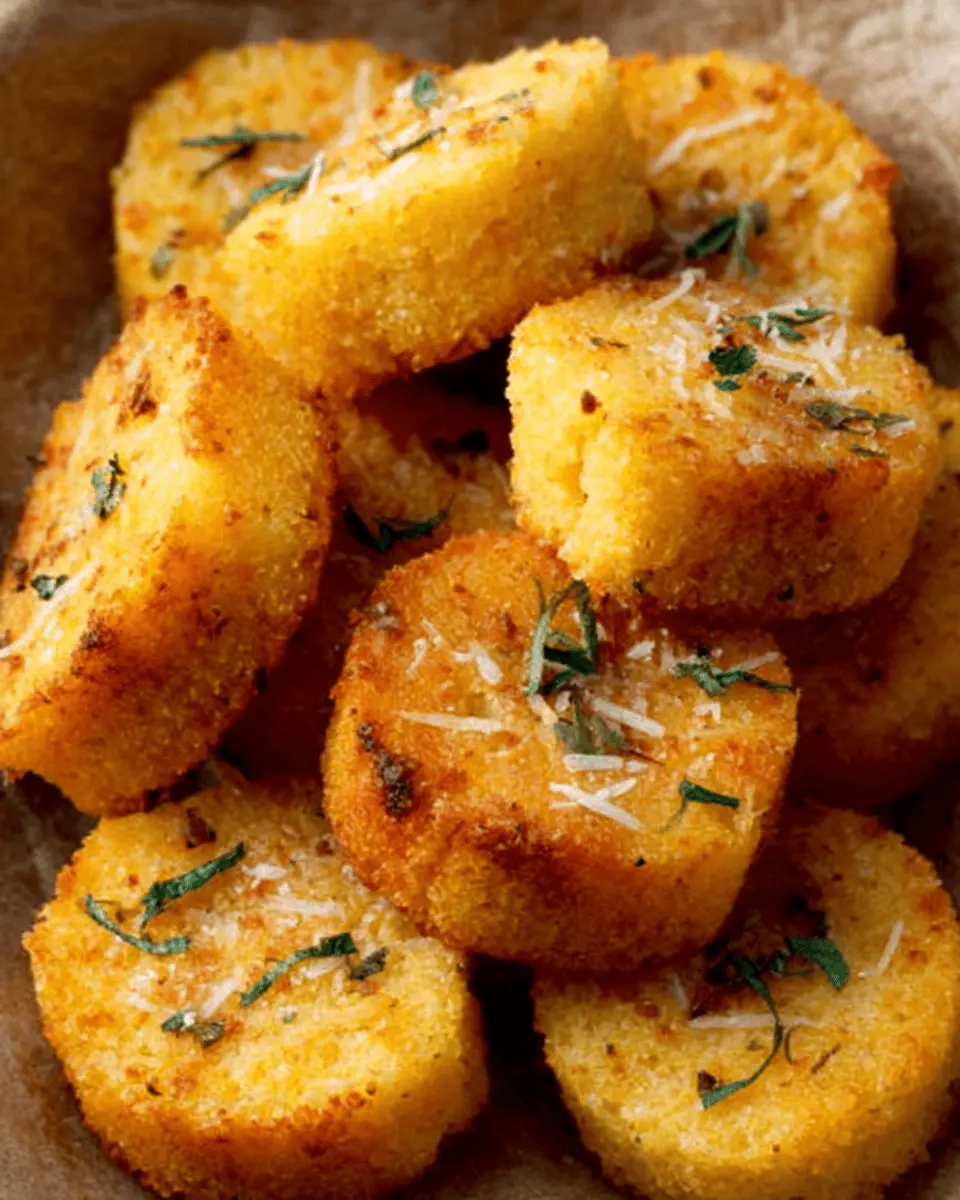Introduction to Classic Cacio e Pepe
What is Cacio e Pepe and Why is it Beloved?
Cacio e Pepe is more than just a dish; it’s a culinary tradition that has captured the hearts (and stomachs) of pasta lovers everywhere. This classic cacio e pepe dish originates from Rome, Italy, and its name translates to “cheese and pepper.” Simple, right? But therein lies its charm—this dish showcases how just a few high-quality ingredients can create something truly unforgettable.
What makes Cacio e Pepe so special? It’s all about the details. The dish primarily consists of spaghetti, Pecorino Romano cheese, and freshly cracked black pepper. Although you might find variations, the essence of Cacio e Pepe lies in its simplicity and the perfect balance between its rich, creamy texture and the sharp kick of the pepper. If you’re looking to impress your friends with minimal effort, this is the dish for you!
You may be wondering, what other folks say about this treasured recipe? The New York Times once celebrated Cacio e Pepe for its ability to elevate ordinary pasta into a deliciously comforting meal. And who can argue with that? This dish has transcended borders and has become a staple in homes across the globe, earning a rightful place in the repertoire of many amateur and seasoned cooks alike.
But let’s talk practicality. Preparing Cacio e Pepe takes only about 15-20 minutes, making it an ideal weeknight dinner or a quick gathering option. This means you can whip up a fantastic meal even when you feel your schedule is bursting at the seams! Plus, it’s an excellent way to use pantry staples without compromising on taste.
Whether you are looking to savor a slice of Italian culture, experiment with cooking techniques, or simply treat yourself to a satisfying meal, Cacio e Pepe is your golden ticket. With just a bit of cheese, pepper, and spaghetti, you’re bound to create something magical. So, why not dive into this delightful recipe? If you’re ready to elevate your pasta game, let’s explore how to craft this Italian classic at home.
For more on the origins and variations of traditional Italian dishes, check out Eataly’s blog for an enriching perspective.
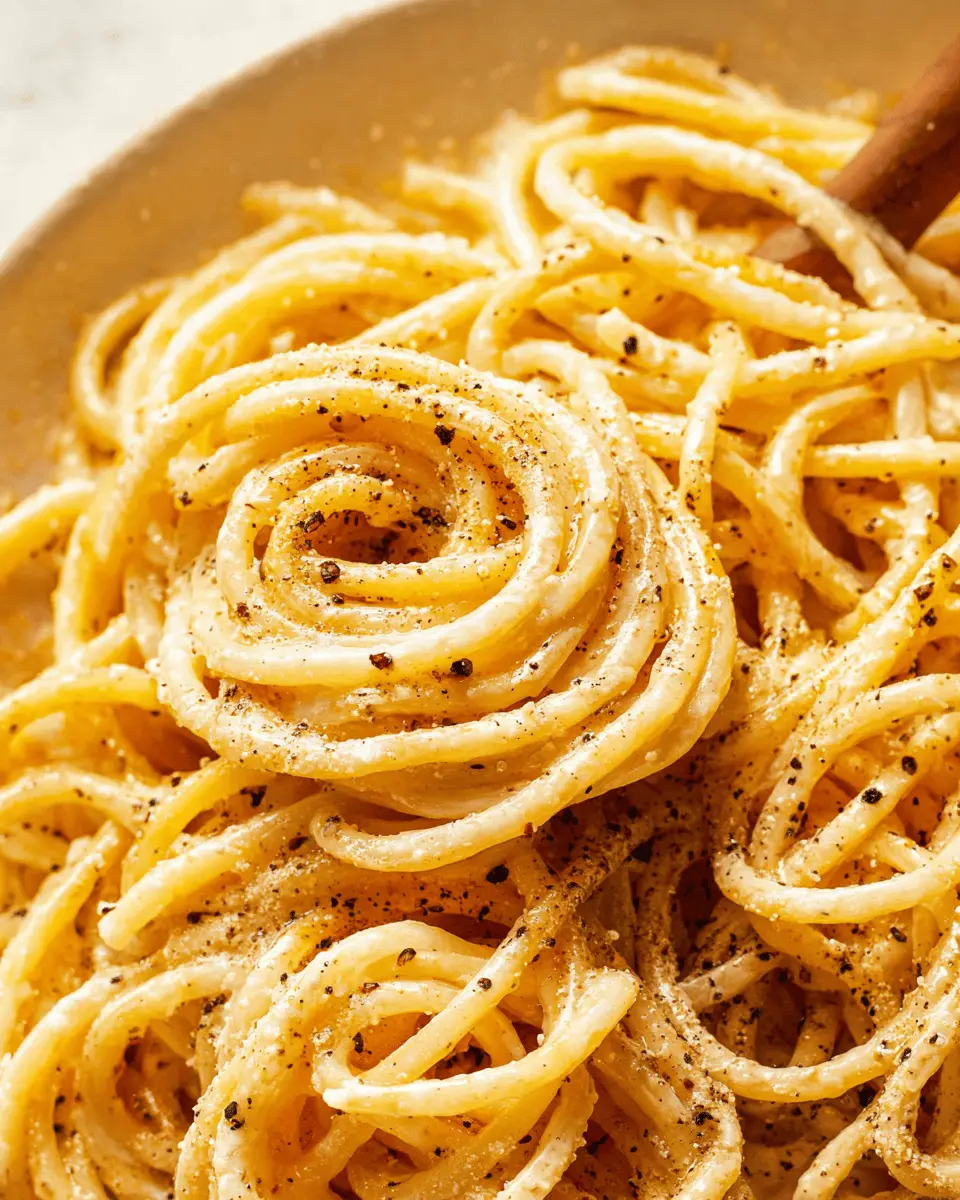
Ingredients for Classic Cacio e Pepe
Cacio e Pepe is one of those beautifully simple dishes that truly highlights the art of Italian cooking. With just a few ingredients, you can prepare a meal that’s both comforting and flavorful. Here’s what you’ll need to whip up this classic cacio e pepe at home:
- Pasta: Spaghetti is the traditional choice, but fettuccine or bucatini also work wonderfully.
- Pecorino Romano: This sharp, salty cheese gives the dish its signature flavor. Grate it finely for the best melt.
- Freshly Ground Black Pepper: The key ingredient after the cheese—it adds that signature warmth and spice.
- Salt: Use it in the pasta water to enhance the overall flavor of the dish.
- Extra Virgin Olive Oil (optional): A drizzle can bring a nice depth and richness.
With these few staples, you can create a dinner that’s both sophisticated and satisfying. Curious about pasta types? Check out this informative resource on pasta varieties for inspiration!
Remember, the quality of your ingredients will shine through, so opt for the best you can find. Is there anything better than a plate of classic cacio e pepe made with love?
Preparing Classic Cacio e Pepe
Making classic cacio e pepe at home might sound intimidating, but trust me, you’ll be surprised at just how simple it is. With a handful of quality ingredients and a bit of practice, you’ll create a dish that feels elegant and comforting at the same time. Let’s break down each step to make this culinary delight.
Cooking the pasta to perfection
The first step in mastering this dish is cooking the pasta. While many types will work, spaghetti holds sauce beautifully, making it a popular choice for cacio e pepe. Here’s how to ensure your pasta is perfectly al dente:
- Use plenty of water: A general rule of thumb is to use at least four quarts of water for every pound of pasta. This prevents the noodles from sticking together.
- Season generously: Add a good amount of salt to the boiling water. Aim for around 1-2 tablespoons. It’s the only chance you’ll get to season the pasta itself.
- Boil until al dente: Follow the package instructions but aim to cook the pasta for one minute less than recommended for the perfect texture. It will continue to cook when combined with the sauce.
- Save the pasta water: Just before draining, scoop out about a cup of that starchy water. Trust me; this will be the key to achieving a creamy sauce later.
Toasting the black pepper
Now, let’s elevate our classic cacio e pepe with a wonderful aroma. Toasting the black pepper brings out its natural oils and enhances its flavor profile significantly.
- Use whole peppercorns: Grind fresh peppercorns using a mortar and pestle or a spice grinder. Freshly ground pepper will add a depth to the dish that pre-ground will simply not achieve.
- Toast gently: In a dry skillet over medium heat, add the freshly ground pepper. Toast it for about a minute or until fragrant, stirring frequently to prevent burning. This step may seem small, but it’s crucial for developing that quintessential cacio e pepe flavor.
Creating that creamy sauce
When it’s time to make the sauce, simplicity is key. The ingredients—just pasta, black pepper, and good quality Pecorino Romano cheese—combine in an almost magical way.
- Combine pasta and pepper: In a large bowl, mix your hot, drained pasta with the toasted black pepper. The residual heat will help to release the flavors.
- Incorporate the cheese: Add finely grated Pecorino Romano cheese while constantly stirring the pasta. This helps it melt and create that iconic creamy sauce.
- Add pasta water: Gradually pour in the reserved pasta water—start with 1/4 cup—while tossing vigorously. The starches in the pasta water will help the sauce cling to the noodles. If it seems dry, add more water until you achieve your desired creaminess.
Tossing it all together
Now comes the fun part! This is where all your hard work comes together.
- Toss with confidence: Use tongs to toss the pasta with the sauce thoroughly. Use big motions to ensure every strand is coated and prevent the cheese from clumping.
- Serve immediately: Enjoy your classic cacio e pepe as soon as it’s ready. This dish is best served fresh out of the pan. Try garnishing with extra cheese and a sprinkle of freshly cracked black pepper for a touch of elegance.
With these steps, you’re well on your way to impressing friends with your homemade classic cacio e pepe. This recipe offers an excellent opportunity to explore different offerings like perfectly cooked chicken ham or turkey bacon on the side, adding a twist to this classic dish.
For more tips on perfect pasta cooking, you can check out authoritative resources like the American Institute for Cancer Research or BBC Good Food. Happy cooking!
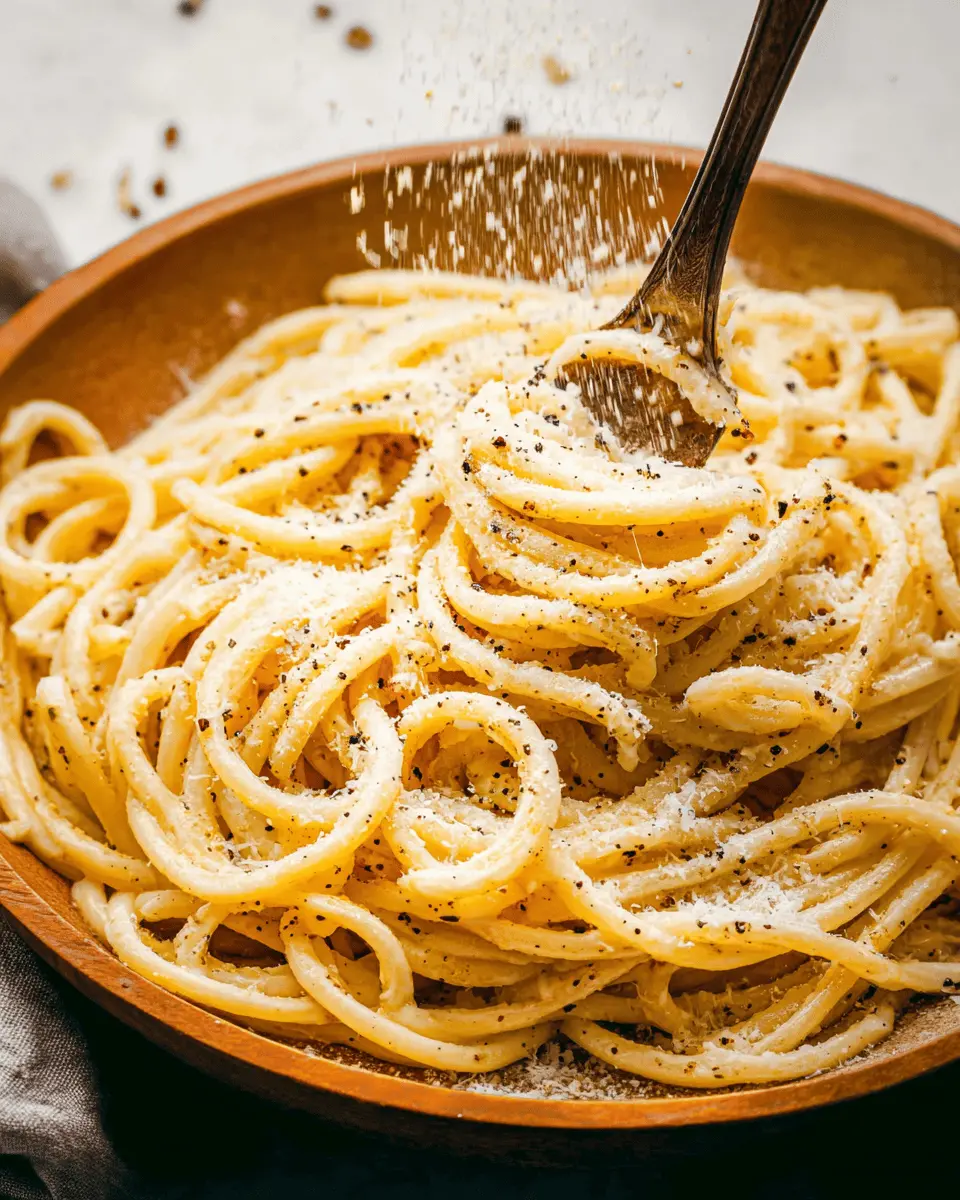
Variations on Classic Cacio e Pepe
When you’ve mastered the art of making classic cacio e pepe, you might be eager to experiment with some delightful variations. Let’s make this dish even more versatile by adding vegetables or protein — perfect for any occasion!
Elevate with Added Vegetables
Adding vegetables to your classic cacio e pepe can boost its nutritional value and flavor profile. Consider incorporating:
- Spinach or Kale: Toss in some fresh spinach or sautéed kale for a healthy touch. Not only do they add color, but they also complement the creamy sauce beautifully.
- Roasted Peppers: Sweet, roasted bell peppers introduce a subtle sweetness and vibrant hue to your plate. They’re super easy to prepare — just chop and roast!
- Zucchini or Squash: Spiralize zucchini or use a mandolin for squash ribbons. These can serve as a lightened-up base that pairs wonderfully with the rich cheese and pepper.
These simple additions offer freshness and make your cacio e pepe a more balanced meal. If you’re curious about nutritional benefits, check out this site on vegetable health benefits.
Protein Add-ins for a Hearty Twist
If you want to create a more filling dish, adding protein is the way to go. Here are some tasty options:
- Turkey Bacon: For that smoky flavor, crispy turkey bacon adds a delightful crunch without overwhelming the dish. Just sauté it in a pan and mix it into your pasta!
- Chicken Ham: Sliced chicken ham can add a savory depth, making your dish heartier while keeping it light and satisfying.
- Grilled Chicken: If you prefer white meat, grilled chicken is a popular choice that pairs beautifully with the pasta’s creaminess.
Incorporating these proteins not only enhances the dish but also adds essential nutrients. Interested in more protein-rich recipes? Explore this expert-guided collection for ideas.
By experimenting with these variations, you can transform your classic cacio e pepe into something uniquely yours, suited to any taste or dietary preference!
Cooking tips and notes for Classic Cacio e Pepe
How to get that sauce just right
Achieving the perfect sauce for your classic cacio e pepe is all about technique. Start by grating high-quality pecorino cheese, which melts beautifully when combined with the starchy pasta water. Make sure to reserve a cup of pasta water before draining your noodles. Gradually mix the cheese with a few tablespoons of this starchy water until you get a creamy consistency. Remember, it’s not just cheese and pepper; it’s all about the balance!
Essential tools for making Cacio e Pepe
To make your classic cacio e pepe experience smoother, equip yourself with a few handy tools:
- Large pot for boiling pasta
- Slotted spoon for transferring pasta
- Tongs for the perfect toss
- A finely grater for the cheese
- A large mixing bowl for combining everything
With these tools, you’ll be whipping up your classic cacio e pepe like a pro! For more expert insights about pasta techniques and tools, you might want to check out Serious Eats.
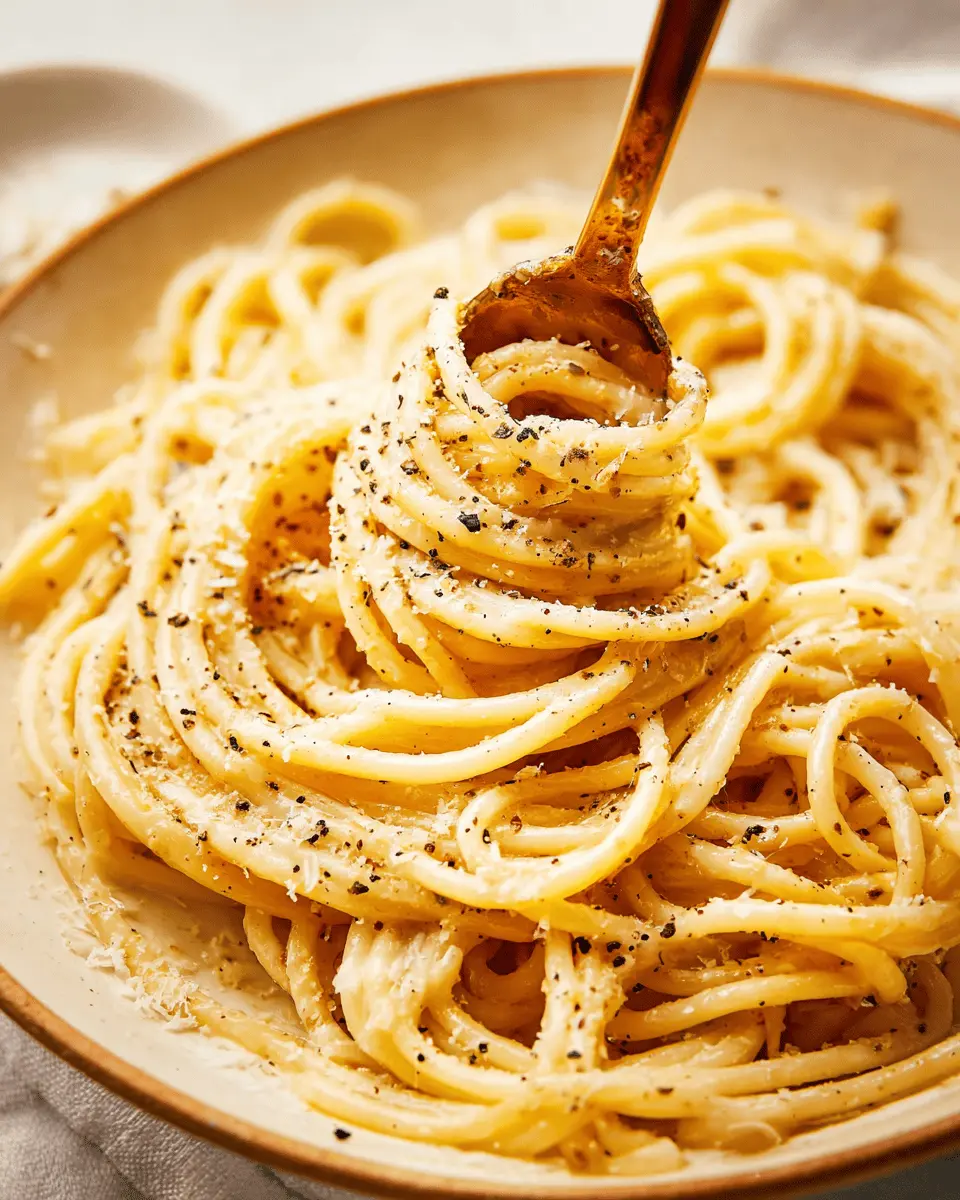
Serving suggestions for Classic Cacio e Pepe
Pairing with sides and salads
When you’re serving classic cacio e pepe, consider sides and salads that complement its creamy, salty character. Fresh arugula with a lemon vinaigrette is a fantastic option, providing a peppery kick that cuts through the richness of the dish. You might also think about adding some roasted vegetables—zucchini or asparagus work wonderfully—to introduce a touch of earthiness.
If you want to elevate the meal further, a light, savory soup like minestrone or a classic Italian wedding soup pairs beautifully. For an extra kick, try adding some crispy turkey bacon or chicken ham on the side for a delightful crunch and an umami boost.
Presentation tips for impressing guests
Presentation is key if you’re looking to wow your guests with your classic cacio e pepe. Serve it in warmed bowls to keep the pasta hot, and garnish with freshly cracked black pepper and a generous sprinkle of Pecorino Romano on top. A sprinkle of fresh parsley can add a pop of color too!
Keep the table settings simple yet elegant—think white plates to highlight the dish’s creamy tones. You can even add a small dish of extra cheese on the side for those who want to indulge a little more.
These thoughtful touches will certainly leave a lasting impression! For more ideas on serving pasta, check out sources like Epicurious for inspiration.
Time Breakdown for Classic Cacio e Pepe
Preparation Time
Getting ready to whip up a delicious classic cacio e pepe doesn’t take long at all! You’ll need about 10 minutes to gather your ingredients and get your workspace organized. Trust me, having everything prepped will make the cooking process much smoother and enjoyable.
Cooking Time
The cooking itself is super quick. In just 15 minutes, you’ll have your creamy sauce and perfectly al dente pasta. Since this dish is all about simplicity and freshness, a little timing can go a long way in achieving that rich, velvety texture you’re aiming for—just like the masters of Italian cuisine!
Total Time
All in, you’re looking at roughly 25 minutes from start to finish. That means you can whip up a delightful plate of classic cacio e pepe on a busy weeknight or serve it as an impressive dish for a small gathering. Your guests will think you spent hours crafting something elaborate when, in reality, it’s a quick and easy affair.
For more tips on pasta cooking times, check out resources like the Pasta Grannies YouTube Channel for authentic Italian techniques!
Nutritional Facts for Classic Cacio e Pepe
Calories per serving
When indulging in a comforting bowl of classic cacio e pepe, you’ll find that each serving packs about 400 calories. This makes it a satisfying meal that can fit well into your daily caloric needs, particularly if you’re opting for a pinch of balance in your diet. Of course, portion control is key, especially if you’re combining it with a light salad or a refreshing drink, like sparkling water with lemon.
Macronutrient breakdown
In terms of macronutrients, a serving of classic cacio e pepe generally contains:
- Carbohydrates: 60 grams — mostly from the pasta, providing a solid energy source.
- Protein: 15 grams — primarily from the cheese, enhancing muscle recovery.
- Fats: 15 grams — thanks to the cheese and any added olive oil, giving that creamy texture you love.
For further insights on the balance of macronutrients in your meals, consider checking out resources like MyFitnessPal or the USDA FoodData Central. Remember, while classic cacio e pepe might not be the healthiest dish out there, it’s certainly a delightful way to enjoy quality ingredients! So, how will you customize it to suit your dietary preferences?
FAQs about Classic Cacio e Pepe
What makes Cacio e Pepe so creamy?
The secret to the delicious creaminess of classic Cacio e Pepe lies in the technique rather than an abundance of cream. When you combine the starchy pasta water with finely grated Pecorino Romano cheese, the heat from the pasta helps melt the cheese, creating a luscious, smooth sauce. It’s essential to reserve some pasta water before draining, as this starchy liquid is crucial for achieving that desirable velvety texture. Remember, the key is to stir vigorously to emulsify the cheese with the water!
Can I use other types of cheese?
While Cacio e Pepe traditionally uses Pecorino Romano, you can experiment with other aged cheeses if you want a different flavor profile. Parmesan cheese can work well too, though it tends to be milder. Just keep in mind that altering the cheese might change the dish’s unique character. If you want more tips on cheese substitutions, check out this comprehensive guide.
How can I make Cacio e Pepe a complete meal?
Transforming your classic Cacio e Pepe into a full-fledged meal is easier than you think! Consider adding grilled chicken ham or sautéed vegetables like spinach or asparagus for extra nutrients and flavor. You could even toss in some crispy turkey bacon for a delightful crunch. Incorporating a side salad can also complement this Italian favorite beautifully. Not sure about the salad? Here’s a popular (and quick!) option you might enjoy: easy arugula salad recipe.
Remember, keep it simple and enjoy the magic of Cacio e Pepe!
Conclusion on Classic Cacio e Pepe
In summary, classic cacio e pepe embodies simplicity and flavor, making it a beloved staple in Italian cuisine. The beautiful marriage of rich Pecorino Romano cheese and fresh black pepper creates an irresistible sauce that clings perfectly to the pasta. When crafting your own version, think about elevating the dish with quality ingredients, as it truly makes a difference.
Experiment with the texture by adjusting the water from the pasta for a creamier finish, or play around with pasta types. Remember, the joy of cooking lies in personalizing recipes to fit your taste. For additional tips on Italian culinary traditions, check out Italian Food Forever for more inspiration. Enjoy your cacio e pepe journey!
PrintClassic Cacio e Pepe: Easy Homemade Comfort in Every Bite
Cacio e Pepe is a classic Italian dish that features cheese and pepper, embodying the heart of Roman cuisine.
- Prep Time: 10 minutes
- Cook Time: 10 minutes
- Total Time: 20 minutes
- Yield: 4 servings
- Category: Pasta
- Method: Stovetop
- Cuisine: Italian
- Diet: Vegetarian
Ingredients
- 8 ounces spaghetti
- 1 cup freshly grated Pecorino Romano cheese
- 2 teaspoons freshly ground black pepper
- Salt to taste
Instructions
- Cook the spaghetti in a large pot of salted boiling water until al dente.
- Reserve some pasta water and drain the rest.
- In a large bowl, combine hot spaghetti with cheese and pepper.
- Mix rigorously and add reserved pasta water to achieve desired creaminess.
- Serve immediately with additional cheese and pepper if desired.
Notes
- For a creamy texture, be sure to use the cooking water.
- Quality cheese makes a significant difference in flavor.
Nutrition
- Serving Size: 1 cup
- Calories: 350
- Sugar: 1g
- Sodium: 400mg
- Fat: 15g
- Saturated Fat: 7g
- Unsaturated Fat: 5g
- Trans Fat: 0g
- Carbohydrates: 40g
- Fiber: 2g
- Protein: 12g
- Cholesterol: 30mg

